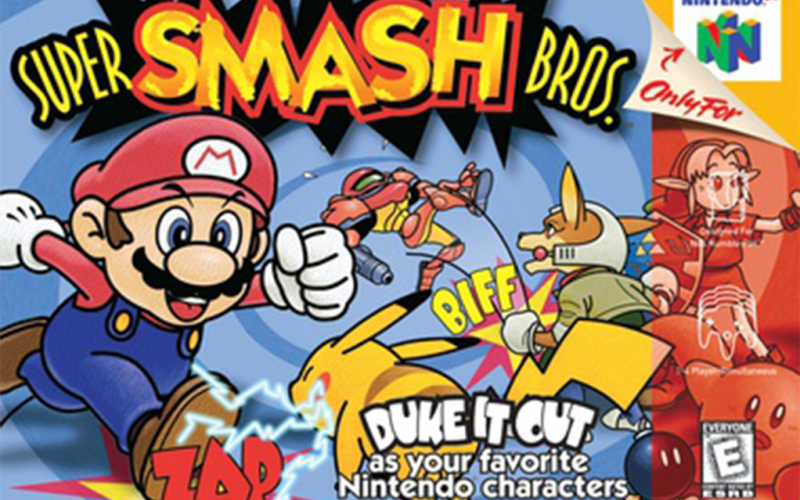The Super Smash Bros Franchise: A Legacy of Unity and Competition

Jamal Habib

The Super Smash Bros Franchise: A Legacy of Unity and Competition
The Super Smash Bros franchise, a series that has become a cornerstone of gaming culture, is a testament to the power of video games to bring people together, foster competition, and celebrate the rich history of the medium. Created by Masahiro Sakurai and developed by HAL Laboratory and Sora Ltd., the franchise made its debut on the Nintendo 64 in 1999. Owned and published by Nintendo, it has since evolved into a multi-title series beloved by fans around the world.
The Creation and Growth of a Phenomenon
Masahiro Sakurai’s vision was to create a fighting game that was accessible to players of all skill levels while still offering depth and complexity for those who sought it. This was achieved through intuitive controls, a departure from the complex command inputs typical of the genre at the time. The inclusion of characters from various Nintendo franchises turned it into a celebration of the company’s history, appealing not just to competitive gamers but to anyone with fond memories of Nintendo’s vast catalog.
The Importance of Super Smash Bros in the Video Game Industry
Super Smash Bros has played a significant role in the video game industry for several reasons. Firstly, it introduced a unique crossover concept, bringing characters from different universes together in a single game. This not only excited fans but also set a precedent for future crossover titles. Secondly, its accessibility brought competitive gaming to a broader audience, contributing to the growth of the esports scene. The franchise’s success demonstrated the commercial viability of competitive gaming, influencing the development and marketing of future titles across the industry.
A Catalyst for Connection
Perhaps the most profound impact of the Super Smash Bros franchise is its ability to bring families and friends together. The game’s design encourages social interaction, with multiplayer battles that are both intense and filled with moments of hilarity. It’s a game that can be enjoyed by players of all ages and skill levels, making it a popular choice for family game nights and gatherings with friends. However, it’s not without its moments of rivalry and frustration, often leading to heated competitions and the occasional dispute among players. Yet, even these moments contribute to the shared experience, creating memories that last long after the console is turned off.
Competitive and Casual Harmony
The franchise has also managed to balance the needs of its competitive and casual player bases. Tournaments and competitive leagues have grown around the game, drawing in players dedicated to mastering its intricacies. At the same time, casual play remains a core part of the experience, with each installment offering modes and features designed to be accessible and enjoyable for everyone.
Super Smash Bros: A Marketing Powerhouse and a Bridge to Third-Party Collaborations
An often-overlooked aspect of the Super Smash Bros franchise’s success is its role as an unparalleled marketing tool for video game franchises, both within and outside of Nintendo’s extensive library. The inclusion of a character in Super Smash Bros serves as a monumental advertisement, introducing millions of players to characters and worlds they might not have encountered otherwise. This effect cannot be understated; it revitalizes interest in older franchises and sparks curiosity in the stories behind the characters, leading to increased sales of their home games.
Spotlighting Nintendo's Icons
For Nintendo, Super Smash Bros acts as a celebration and showcase of its storied history, featuring a roster that reads like a who’s who of the video game world. Characters such as Mario, Link, and Samus have been with the franchise from the beginning, serving not only as playable fighters but as ambassadors of their respective series. The inclusion of lesser-known characters has also reignited interest in their games, demonstrating the franchise’s power to breathe new life into dormant series.
Fostering Third-Party Relationships
Perhaps more fascinating is how Super Smash Bros has opened the door to unprecedented collaborations with third-party developers and publishers. Characters like Sonic the Hedgehog, Solid Snake, Cloud Strife, and more recently, Joker from “Persona 5,” have joined the fray, marking significant milestones in Nintendo’s relationships with companies like SEGA, Konami, Square Enix, and Atlus. Each collaboration is a testament to the mutual respect and admiration within the industry, as these companies allow their cherished characters to take part in Nintendo’s crossover extravaganza.
These partnerships are not merely symbolic; they have tangible benefits for all parties involved. For third-party companies, having a character featured in Super Smash Bros can lead to a surge in popularity and interest in their franchises, often resulting in increased sales of their games on Nintendo platforms and beyond. For Nintendo, these collaborations enhance the appeal of the Super Smash Bros franchise and, by extension, the Nintendo platform as a whole, making it a more attractive destination for gamers seeking a diverse gaming experience.
A Win-Win Scenario
The genius of Super Smash Bros as a marketing tool lies in its ability to create a win-win scenario for Nintendo and its partners. It serves as a celebration of gaming’s past, present, and future, where characters from various franchises can come together and fight it out in a friendly competition. This not only promotes the games they come from but also fosters a sense of community among players, encouraging exploration of new gaming experiences.
The Super Smash Bros franchise has proven itself to be much more than a successful series of fighting games. It’s a powerful platform for marketing, a catalyst for fostering relationships with third-party video game companies, and a bridge connecting diverse gaming worlds. As the franchise continues to evolve, its role in promoting video game franchises and facilitating unique industry collaborations will undoubtedly continue to grow, further cementing its legacy as a pivotal force in the world of video games.
Super Smash Bros and Cultural Impact
Super Smash Bros has transcended its status as a mere video game to become a cultural phenomenon. It’s a common sight at gaming conventions, and references to the game permeate pop culture. The anticipation and reveal of new characters for the roster become major events within the gaming community, showcasing the franchise’s significant influence.
Conclusion
The Super Smash Bros franchise stands as a remarkable achievement in gaming, embodying the spirit of competition, the joy of collaboration, and the celebration of gaming history. It has shown how games can be more than just entertainment; they can be a means of connection, a platform for competition, and a source of countless memories for families and friends. As the franchise continues to evolve, one thing remains certain: Super Smash Bros will continue to be a unifying force in the gaming world, bringing people together in the spirit of fun and competition for years to come.
